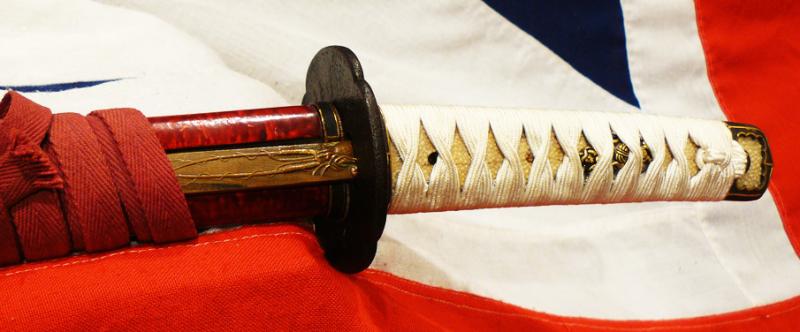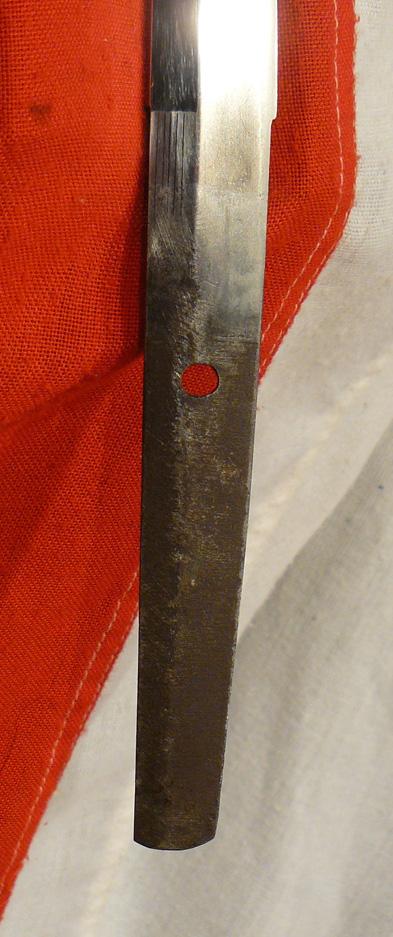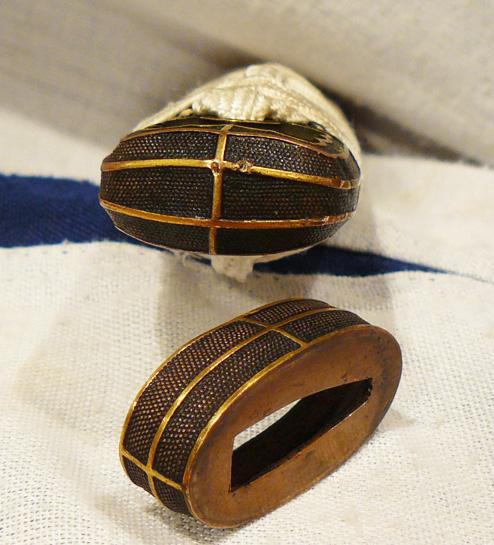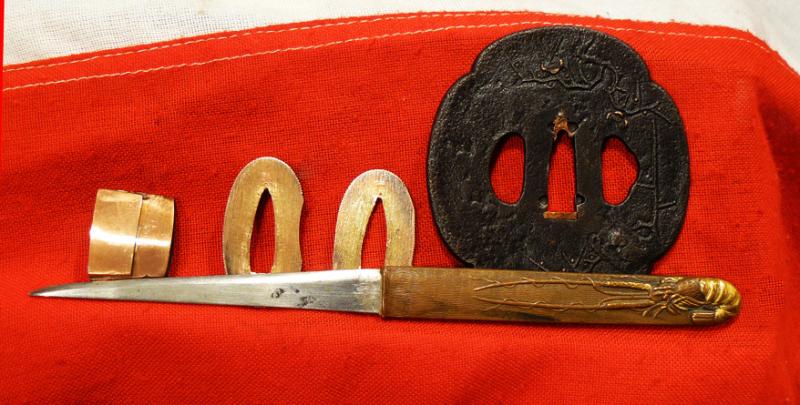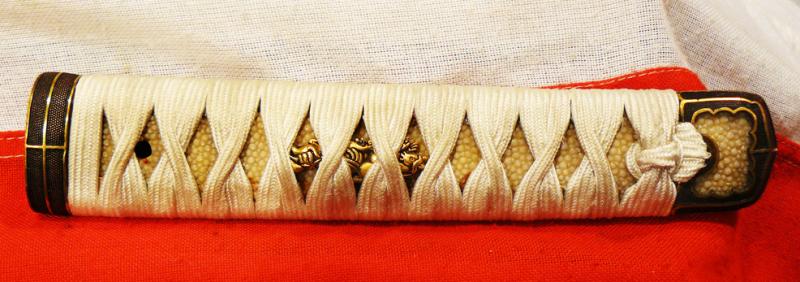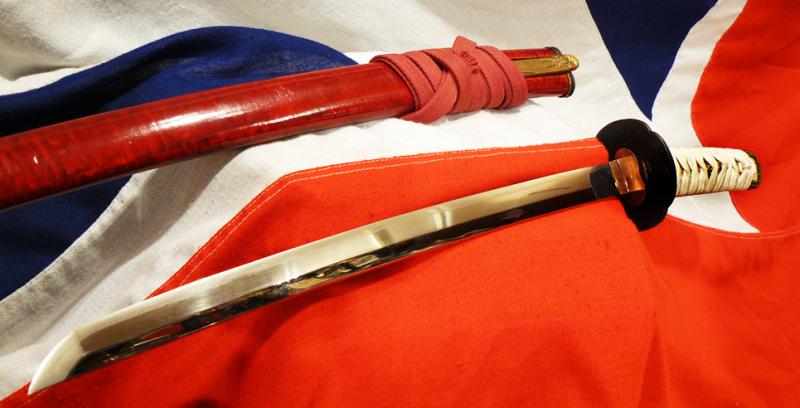A Simply Stunning Japanese Koto Period Wakazashi Bound In Imperial White & Devil Red Urushi Lacquer From The Time of The Battle of Sekigahara, The End of the Sengoku.
Late Koto period blade, circa 1590, in beautiful polish and fine suguha hamon. With a full suite of Edo period, gold and patinated shakudo fittings, a fine iron Edo tsuba, and a crayfish handled kodzuka utilty knife in patinated copper and gold. With a pair of pure gold overlaid takebori galloping ponies as menuki underneath the white silk ito.
It has a singularly beautiful and most scarcely seen colour combination of 'Red Devil' red and imperial white. White ito binding being the prerogative of only those of the highest level of status, due to it's obvious difficulty to maintain in pristine condition when worn regularly. Rich, so-called 'Red Devil' red, was the distinctive colour, and famous in Japanese samurai history, as the Li clan family’s colour, depicted with their imposing red lacquered suits of armour and weapons.
Rich red, as opposed to the more usual black and brown, was worn by all from the lord down to the foot soldiers, and it marked them out on the battlefield and advertised their origin to those who stood opposed to them. Known as the Red Devils, samurai under the rule of the Ii family played an integral part in the battles that ended the civil war and raised Tokugawa Ieyasu to the office of shogun, gaining great fame and a fierce reputation.
The Sengoku period was initiated by the Onin War in 1467 which collapsed the feudal system of Japan under the Ashikaga Shogunate. Various samurai warlords and clans fought for control over Japan in the power vacuum, while the Ikkō-ikki emerged to fight against samurai rule. The arrival of Europeans in 1543 introduced the arquebus into Japanese warfare, and Japan ended its status as a tributary state of China in 1549. Oda Nobunaga dissolved the Ashikaga Shogunate in 1573 and launched a war of political unification by force, including the Ishiyama Hongan-ji War, until his death in the Honnō-ji Incident in 1582. Nobunaga's successor Toyotomi Hideyoshi completed his campaign to unify Japan and consolidated his rule with numerous influential reforms. Hideyoshi launched the Japanese invasions of Korea in 1592, but their eventual failure damaged his prestige before his death in 1598. Tokugawa Ieyasu displaced Hideyoshi's young son and successor Toyotomi Hideyori at the Battle of Sekigahara in 1600 and re-established the feudal system under the Tokugawa Shogunate. The Sengoku period ended when Toyotomi loyalists were defeated at the siege of Osaka in 1615.
The Battle of Sekigahara (Shinjitai: 関ヶ原の戦い; Kyūjitai: 關ヶ原の戰い, Hepburn romanization: Sekigahara no Tatakai) was a decisive battle on October 21, 1600 (Keichō 5, 15th day of the 9th month) in what is now Gifu Prefecture, Japan, at the end of the Sengoku period. This battle was fought by the forces of Tokugawa Ieyasu against a coalition of Toyotomi loyalist clans under Ishida Mitsunari, several of which defected before or during the battle, leading to a Tokugawa victory. The Battle of Sekigahara was the largest battle of Japanese feudal history and is often regarded as the most important. Mitsunari's defeat led to the establishment of the Tokugawa shogunate.
Tokugawa Ieyasu took three more years to consolidate his position of power over the Toyotomi clan and the various daimyō, but the Battle of Sekigahara is widely considered to be the unofficial beginning of the Tokugawa shogunate, which ruled Japan for another two and a half centuries
Ii Naomasa, served as one of Tokugawa Ieyasu's generals, and received the fief of Hikone in Omi Province as a reward for his conduct in battle at Sekigahara. The colour of their armour meant that they were the easiest to recognise on the painted screens that depicted the great events of Japanese history, showing that the Ii family understood the benefits of good public relations. The Ii and a few sub-branches remained daimyo for the duration of the Edo period.
The family remained at the heart of events until 1860 when Ii Naosuke, the last of the lords of Hikone was murdered by anti-shogun and anti-Western rebels. He was deeply involved in the negotiations between the shogunate and the Western diplomats concerning the opening of Japan to trade
Code: 25203
4750.00 GBP




